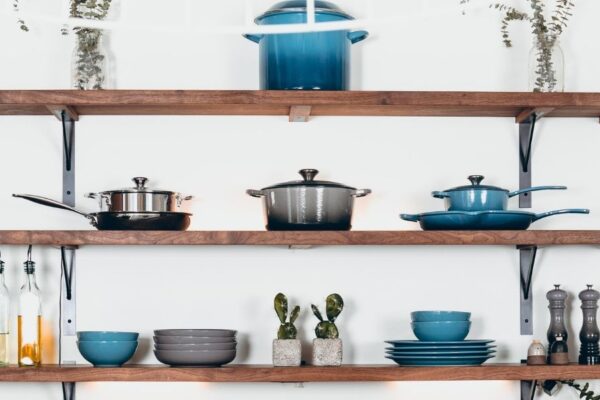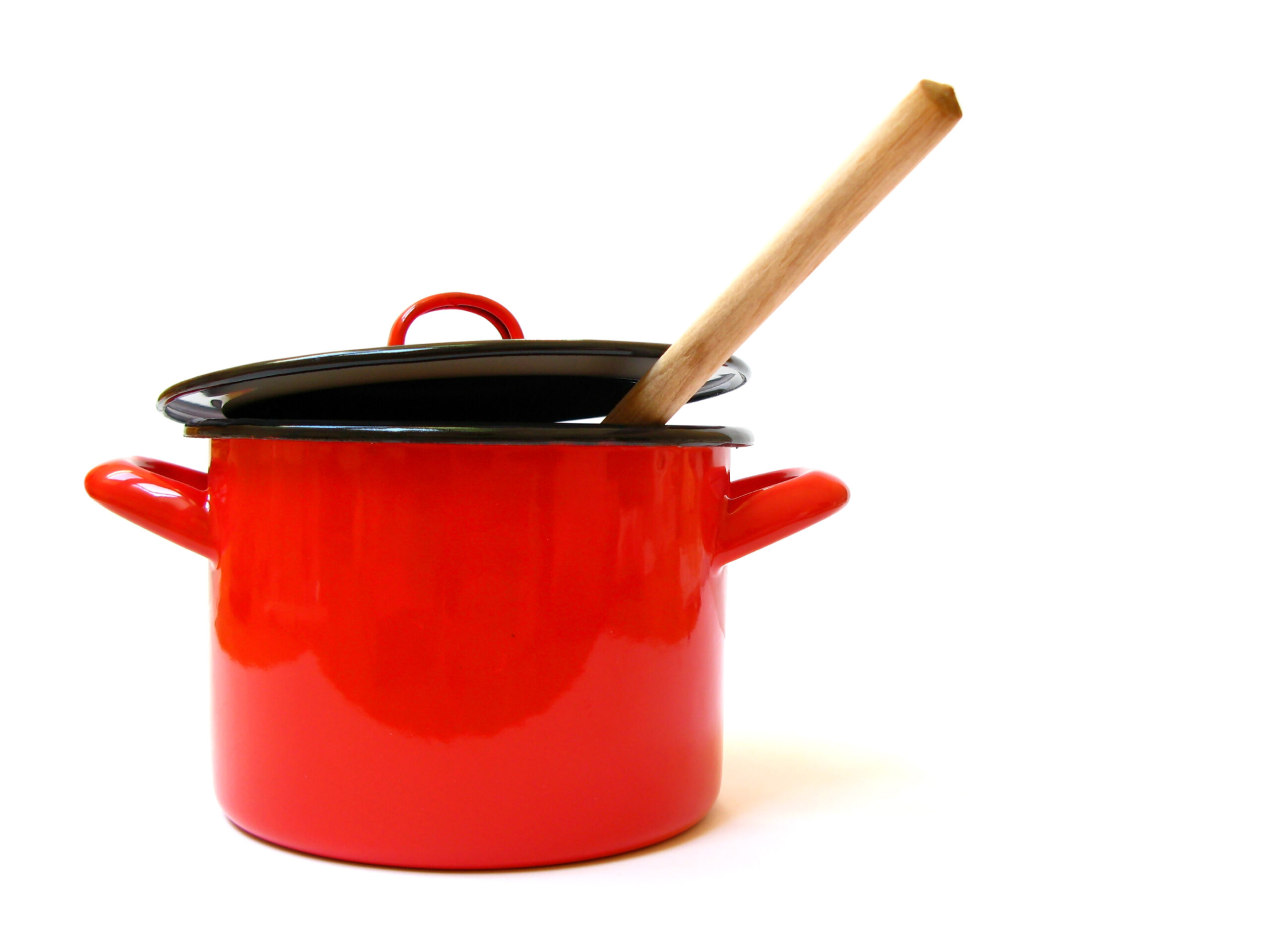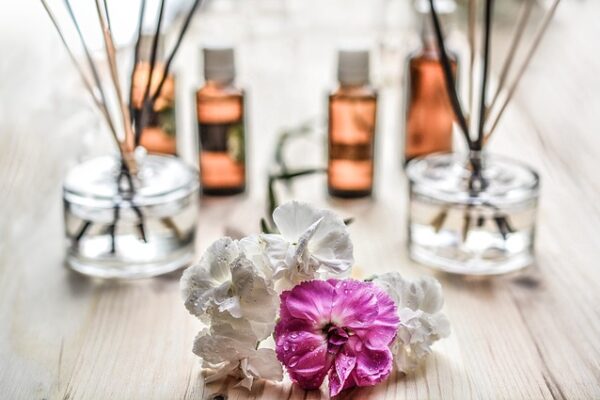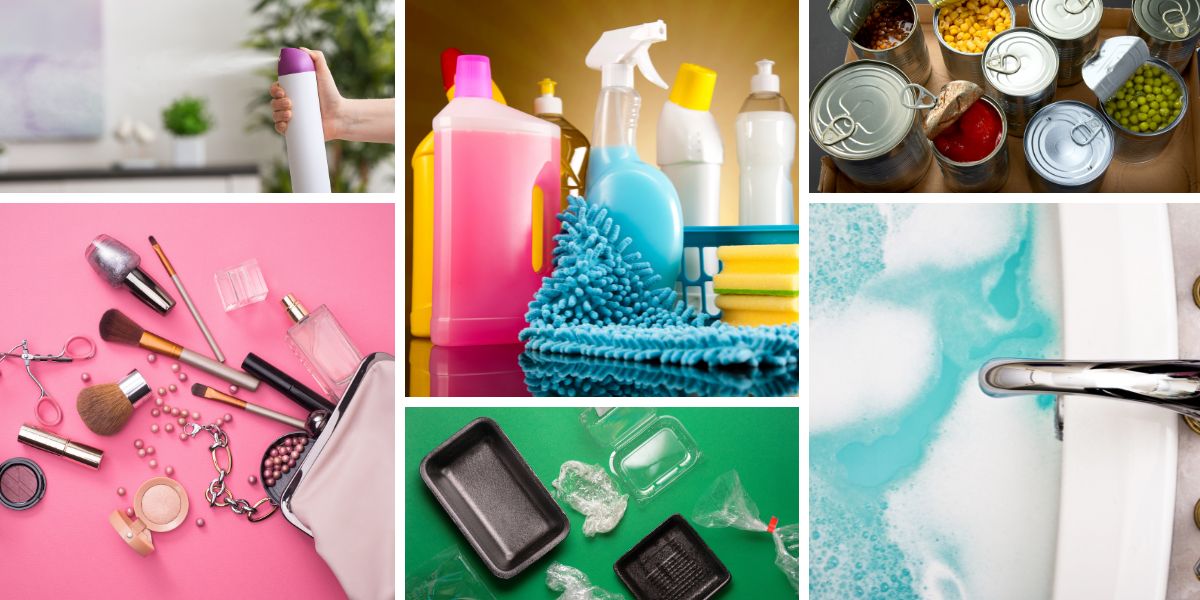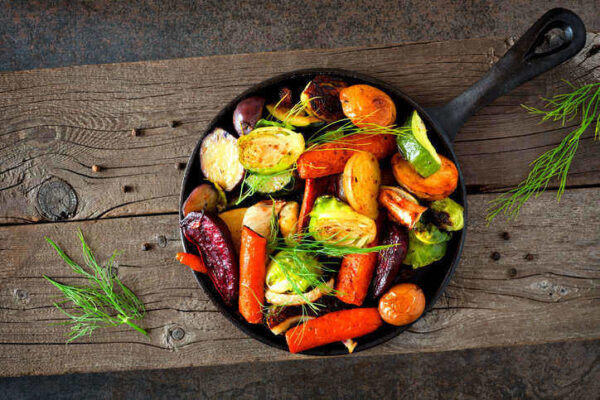8 Ways to Detox Your Kitchen

There are a multitude of foods that help us detoxify our bodies on a regular basis, but if we’re preparing those foods in a kitchen loaded with chemicals that damage our health we may not be much further ahead. The solution? Detox your kitchen! Making a few simple swaps will allow you to boot unnecessary toxins and harmful compounds out of your kitchen so they won’t enter your body, either by mouth or through your skin.
Here are a few suggestions to help you detox your kitchen today!
1. Swap out the Teflon cookware
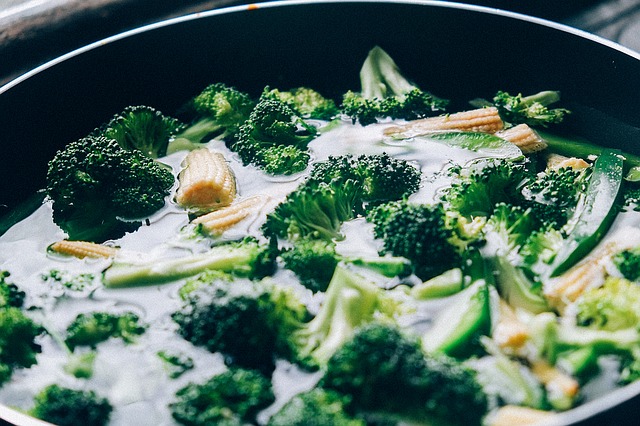
Polytetrafluoroethylene (PFTE) and perfluorooctanoic acid (PFOA) are chemicals found in Teflon cookware and they can be ingested and inhaled when cooking. They are potential cancer-causing substances, may give you flu-like symptoms and can even be found in human breastmilk.
Mimi Huang, a toxicologist, states, “Assuming you use your cookware appropriately, i.e. not heating it excessively and unattended, always heating the pan with something in it, not scratching off the Teflon and consuming it for dinner, using non-stick pans is relatively safe for humans.” That’s a lot of caveats to make a piece of equipment ‘relatively safe’. Teflon-ites claim that it’s safe up to 350 degrees – but how do you know what level of heat your element is producing and if the heat is excessive?
Avoid the confusion and try using cast iron, ceramic, or stainless steel cookware instead. Some of these options can be more expensive, but they last a long time. To save money, try scouring thrift stores or garage sales for a good cast iron pan (or pillage your grandmother’s kitchen).
Also, if you are disposing your Teflon cookware ensure you do it safely. Get in touch with your municipality about the best way to do this.
2. Replace paper towels and napkins with reusables
Paper towels are an energy drain on the environment because they require water, energy and trees to be produced – and then we throw them in the trash. Even recycled paper towels use water and energy. According to one survey, 95% of American households use paper towels.
Aside from the environmental impacts, many paper towel and napkin brands use bleach, chlorine, formaldehyde or bisphenol A (or a combo of more than one of these). Exposure to chlorine and formaldehyde may boost our risk of cancer, while BPA disrupts our endocrine system, which is responsible for our hormones.
To mop up kitchen spills, try using cut-up old dish towels and t-shirts. They are absorbent, re-usable, and it’s likely you already have some old duds on hand that you could transform! For a napkin replacement, use cloth napkins.
3. Use non-toxic kitchen cleaning products
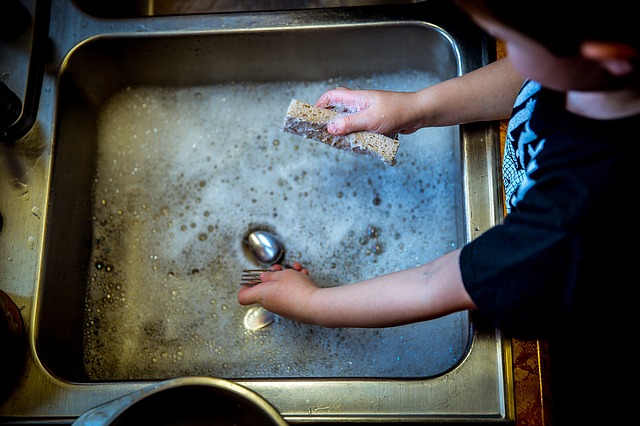
We all want a clean and safe kitchen for food preparation, but conventional cleaning products contain a cocktail of volatile organic compounds (VOCs) and other chemicals that can harm our health. Some of the risks include asthma, allergies, skin issues like dermatitis, endocrine disruption and cancer.
Fortunately, there are a multitude of non-toxic cleaning products on the market nowadays – or you can make your own. Mix baking soda, vinegar or lemon juice, your favourite essential oils (we like peppermint or tea tree oil) and water in a squeeze bottle and use it to wipe down your kitchen surfaces.
If you have conventional cleaning products at home, don’t toss them down the drain! As with Teflon, get in touch with your city about the best way to dispose of harsh cleaning chemicals.
Get your FREE Kitchen Detox Checklist plus 35 more free resource guides!
Fill out the form below for instant access.
Free Resource Library
Enjoy more than 40 downloadable guides, recipes, and resources.
4. Store food without plastic
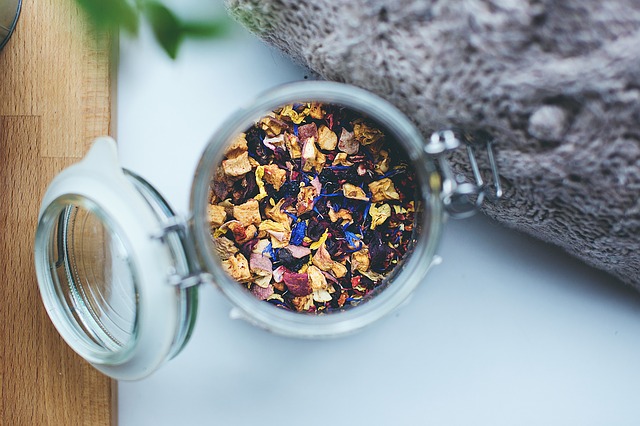
Tupperware, plastic bags, plastic wrap and other kitchen plastics contain bisphenol A, which disrupts our endocrine system. Not to mention the huge drain plastics have on the environment.
Skip the plastics and opt for re-usable glass containers, stainless steel containers, beeswax wraps (one of our culinary nutrition expert program grads makes them), mason jars or fabric snack bags. These alternatives are easy to use, clean and store. If cost is an issue, start slowly – you don’t need to replace everything at once! Check out garage sales and thrift shops, or save your glass containers from store-bought items, such as nut butters, to re-use. Mason jars tend to be inexpensive as well, so check out your local hardware store for a flat of them.
Need additional guidance about cultivating a healthy environment in every room of your home? Click here to learn about Healthy at Home, an online course that shares simple and important things we can do every day to reduce our exposure to toxins in our homes.
5. Drop the vegetable oils
Oil is a kitchen staple, but it’s important to choose the right oils to support our health. There are many vegetable oils (including soy, corn, canola, safflower, cottonseed, etc.) that pose health risks due to the way they’re processed and the types of fats they contain. You can read more about the dangerous side of vegetable oils here.
The good news is there are many nutritious oils we can use at a variety of temperatures! Some of these include:
- Ghee
- Coconut oil
- Olive oil
- Hemp oil
- Flax oil
- Chia oil
- Avocado oil
- Sesame oil
In this Guide to Choosing Healthy Cooking Oils, we offer a full breakdown of the best oils to use and at what temperature.
6. Get a water filter
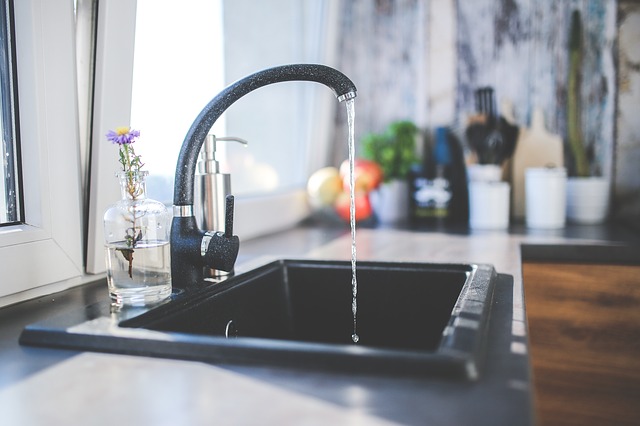
Most municipal drinking water contains chlorine, a disinfectant. Chlorine disrupts our gut flora and boosts our cancer risk. Some cities treat water with fluoride, a potential endocrine disruptor. The chemicals in your water depend on where you live, so investigate what you have in order to find the best water filter to meet your needs.
Installing a water filter in your kitchen is easy to do, or you can purchase a unit for your counter to detox your kitchen. Whatever you do, please don’t buy bottled water. You’re exposing yourself to the risks of plastic and creating environmental waste, not to mention that companies draw from municipal sources, treat it and then bottle it. You might as well skip the middle man and the continual cost and install a water filter yourself.
7. Clean out the spice cabinet

Certain foods, such as whole/ground spices and seasonings, are approved for radiation. The intent behind this is to reduce the risk of mold, bacteria and parasites, to get rid of any insects and to increase shelf life.
Food irradiation produces potentially harmful byproducts, can change the flavour and destroys some of the nutrients found in foods. It doesn’t prevent food from spoiling, but may mask the odour we would normally recognize from a food that’s gone off.
Dried herbs and spices are a mighty part of the culinary nutrition arsenal, so check your spice containers as they will be labelled if they’ve been irradiated.
8. Shop with re-usable shopping bags and produce bags
Canadians take home 2.86 billion plastic shopping bags every year; in the US that number is a staggering 100 billion. And those numbers are just the retail bags and don’t include the extra plastic we might use to grab nuts and seeds from the bulk bin or use for our produce.
While many grocery stores are charging levies for plastic bags now and some cities have banned them outright, we can still do our part in the kitchen. Keep re-usable fabric shopping bags in your kitchen, purse or car so you’ll have them on hand when you grocery shop. There are also a variety of smaller mesh and fabric bags you can purchase for bulk goods such as produce, nuts, seeds, gluten-free flours, etc. Click here for more tips about keeping a zero waste kitchen.
These eight simple ways to detox your kitchen will help you improve your health without compromising the flavour, quality or deliciousness of your food. What do you have to lose?

Photo/iStock annaia
Free Resource Library
Enjoy more than 40 downloadable guides, recipes, and resources.















